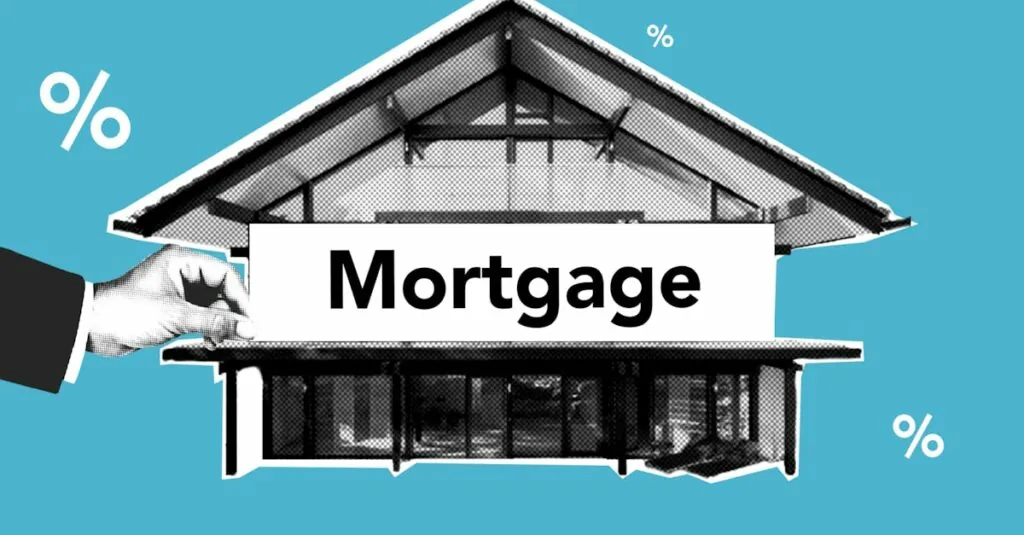Dreaming of owning a home? You’re not alone. But before you can hang that “Home Sweet Home” sign, there’s a little thing called a down payment that needs your attention. Think of it as the golden ticket to your very own castle. Saving for that down payment might feel like trying to squeeze a watermelon into a coin purse, but it doesn’t have to be a Herculean task.
Table of Contents
ToggleUnderstanding Down Payments
Understanding down payments is crucial for potential homeowners. A down payment represents a percentage of a property’s purchase price required upfront. This amount typically ranges from 3% to 20% of the home’s price, depending on the mortgage type and lender requirements. For example, a $300,000 home at a 20% down payment equates to $60,000.
Down payments impact the mortgage process significantly. Higher down payments often lead to lower monthly payments and interest rates. They may also eliminate private mortgage insurance (PMI), a financial requirement for smaller down payments.
Calculating a down payment involves more than just a percentage. Buyers must consider closing costs, which can range from 2% to 5% of the home price. Saving for these costs ensures a smoother transition into homeownership.
Setting savings goals provides a clear path. He or she should divide the total needed down payment by the number of months until they plan to purchase a home. For instance, aiming to buy in five years means saving $1,000 monthly for a $60,000 down payment.
Using various savings strategies can enhance the process. High-yield savings accounts, certificates of deposit (CDs), and dedicated home savings accounts offer potential growth on saved funds. Each option provides unique benefits tailored to individual needs.
Down payments matter extensively in the home-buying journey. Understanding them equips potential homeowners with essential knowledge, making the dream of owning a home achievable.
Importance of Saving for Down Payment on a House
Saving for a down payment is crucial in the home buying process. This financial preparation can greatly affect the overall affordability and long-term benefits of owning a home.
Building Equity
Building equity becomes achievable once a down payment is secured. Equity represents ownership in a property and increases as mortgage payments are made. A higher initial payment accelerates this process, enabling homeowners to gain a larger stake in their property’s value. Increased equity can provide future financial flexibility, such as access to home equity loans or lines of credit. Utilizing this equity effectively can support other investments or major expenses.
Reducing Monthly Payments
Reducing monthly payments significantly occurs with a larger down payment. A higher upfront contribution lowers the overall loan amount, resulting in smaller monthly mortgage payments. This decrease contributes to better cash flow, allowing for improved management of living expenses. Additionally, lower monthly payments often apply fewer interest costs over time, leading to substantial savings. For many, this financial relief enhances the overall homeownership experience, making it easier to budget effectively.
Strategies for Saving Money
Saving for a down payment requires effective strategies. Utilizing proper techniques can simplify the process and enhance results.
Setting a Budget
Creating a budget is essential for tracking income and expenses. Individuals should list all sources of revenue alongside fixed and variable costs. Identify areas where reductions can occur, like dining out or subscription services. Allocating a specific amount each month toward savings fosters discipline. Setting a target for the down payment helps emphasize the importance of sticking to the financial plan. Monitoring progress regularly ensures accountability and motivates individuals to stay focused and make adjustments as needed.
Automating Savings
Automating savings simplifies the process of putting money aside. Individuals can set up transfers from checking accounts to high-yield savings accounts on payday. This strategy ensures consistent contributions without requiring manual intervention. Establishing specific savings goals provides greater clarity on how much to automate each month. By treating savings like a recurring expense, it becomes part of the financial routine. Regular contributions accumulate over time, leading to substantial savings for a down payment. Automating helps individuals remain committed to their goals while reducing the temptation to spend.
Resources to Help You Save
Utilizing effective resources can accelerate saving for a down payment. Consider the following options for maximizing savings efforts.
High-Interest Savings Accounts
High-interest savings accounts offer competitive interest rates that help grow savings faster. Many traditional banks and online institutions provide these accounts with minimal fees. Prioritizing an account that compounds interest monthly or quarterly significantly enhances growth potential. Open an account that allows automatic transfers, which simplifies the saving process. By setting aside a specific amount each month, individuals can build their down payment fund while earning interest on their existing savings.
Down Payment Assistance Programs
Down payment assistance programs provide crucial financial support for homebuyers. Various local, state, and federal options can reduce the amount required for upfront costs. Grants or low-interest loans can lessen the burden of saving for a down payment. Research eligibility requirements thoroughly to find suitable programs in the area. Participating in these programs often includes options for first-time homebuyers, making homeownership more accessible and affordable for many potential buyers.
Common Mistakes to Avoid
Avoiding specific mistakes can make saving for a down payment easier. Overspending on unnecessary expenses often derails savings goals. Failing to create a budget means missing out on tracking income and expenses. Not setting clear savings targets leads to ambiguity in financial planning.
Ignoring the need for automation can slow the savings process. Establishing automatic transfers to high-yield savings accounts encourages consistent contributions. Skipping regular progress checks may diminish motivation and accountability.
Neglecting to consider additional costs, like closing costs, contributes to budget shortfalls. Homebuyers might focus solely on the down payment, overlooking other expenses associated with purchasing a home. Disregarding down payment assistance programs can limit opportunities for financial support. Many first-time homebuyers benefit from these resources, which offer grants or low-interest loans.
Choosing low-interest savings accounts instead of high-yield options minimizes growth potential. Homebuyers should prioritize accounts that compound interest frequently. Underestimating the importance of building credit impacts overall affordability. A higher credit score helps secure better mortgage rates, thus easing monthly payments.
Relying solely on one saving method often creates challenges. Combining different strategies, such as budgeting and using high-interest accounts, enhances the saving process. Failing to seek financial guidance can also hinder progress. Consulting financial advisors offers valuable insights tailored to individual situations.
By recognizing and avoiding these common mistakes, individuals increase their chances of achieving their down payment goals.
Saving for a down payment is a crucial step toward achieving the dream of homeownership. With the right strategies and a clear plan in place, individuals can make this goal more attainable. By budgeting effectively and automating savings, they can steadily build their financial foundation.
Utilizing high-yield savings accounts and exploring down payment assistance programs can further enhance their efforts. Staying mindful of common pitfalls ensures that the journey to homeownership remains on track. Ultimately, the commitment to saving not only leads to a successful home purchase but also paves the way for long-term financial stability and growth.





